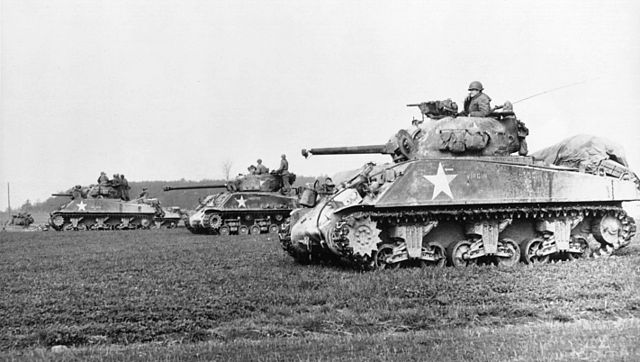A medium tank is a classification of tanks, particularly prevalent during World War II, which represented a compromise between the mobility oriented light tanks and the armour and armament oriented heavy tanks. A medium tank's classification is not actually based on weight, but off of tactical usage and intended purpose; for instance the German Panzerkampfwagen V Panther medium tank has a mass similar to contemporary Allied heavy tanks. The most widely produced, cost effective and successful tanks of World War II were all medium tank designs. Many of the medium tank lines became what are called main battle tanks in most countries.
A Soviet T-34-85 medium tank
The German Panzer IV medium tank proved to be an adaptable design which was progressively upgraded during the Second World War with extra armour and better guns fitted
Sherman medium tank from World War II, the workhorse of U.S. armoured forces
American M46 Patton medium tank in the Korean War.
Tank classification is a taxonomy of identifying either the intended role or weight class of tanks. The classification by role was used primarily during the developmental stage of the national armoured forces, and referred to the doctrinal and force structure utility of the tanks based on design emphasis. The weight classification is used in the same way truck classification is used, and is intended to accommodate logistic requirements of the tanks.
The Challenger 2 is a main battle tank
A British Matilda tank displaying a captured Italian flag
Cromwell tank.
Churchill Crocodile flame tank








